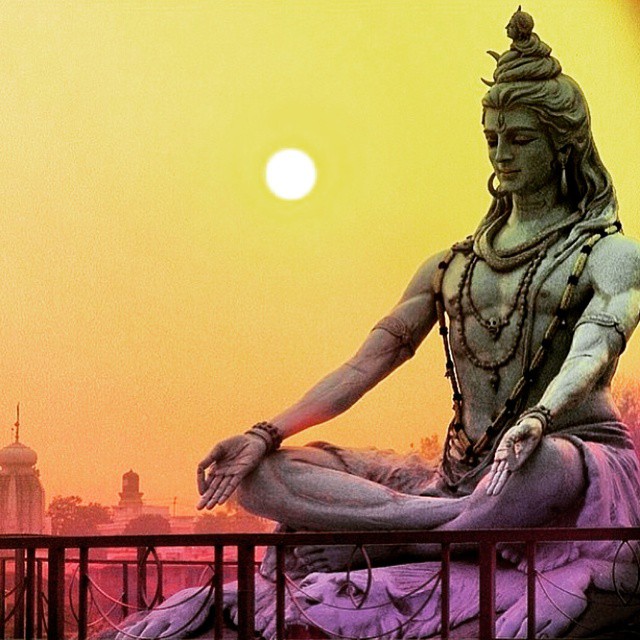The stature of Shiva in Hinduism has always been of a God that is mystical, shrouded in mysteries beyond mortal comprehension. Popularly known as Mahadeva, Lord Shiva is one of the most influential amongst the holy trinity of Hinduism – Brahma, Vishnu, and Mahesh. He is benevolent as well as fear inducing with his many forms and features. Considered as the destroyer of the world, Lord Shiva is the most venerated and most significant God due to various adornments he wears and the way those adornments define the world inside and outside of him.
From a crescent moon on his head to third eye between his eyebrows, each imagery depicted along with Shiva has a meaning that is worldly and mythical.
- Moon:
According to one of the legends, King Daksha, son of Lord Brahma, got his 27 daughters (Nakshatras) married to Chandra (Moon). But Chandra was only smitten by Rohini. This didn’t go well with the rest of the 26 wives of Chandra, who approached their father Daksha to complain about their husband. Deeply disappointed and angered by Chandra’s behaviour, Daksha cursed his son-in-law by saying that his body would perish. And as a result, Chandra gradually started losing his form. Fearing he would cease to exist, Chandra rushed to Lord Shiva for help. To save Chandra from perishing, Lord Shiva asked him to take refuge in his locks to protect him from Daksha’s curse. Hence Shiva is also known as Chandrashekhar. The Lord is also known as Somnath (or protector of Som).
- Third Eye:
The third eye is the eye of perception. The two physical eyes are just sensory organs. They feed the mind with all kinds of nonsense, because what you see is not the truth. As Shiva, the ultimate ascetic, has evolved and refined his energies in such a way that he can perceive beyond the worldly affairs. Thus, Shiva has been refereed as Triambaka, the one who has a third eye. It is therefore said that only Shiva is the one who can see beyond the duality of life.
- Trishul:
The trident that is carried by Mahadev is nothing but a representation of three fundamental aspects of life. These three aspects are three gunas, namely, Satva, Raja, and Tama. While many scholars also say that these three spikes are representation of three basic nadis – Ida, Pingala, and Sushumna.
The trishul is also a destroyer of illusions and attachments associated with the physical world while focusing on past, present and future.
The active and the passive force, the ultimate reality, eternal and transcendent; Lord Shiva is beyond our understanding. The symbols that we have annotated to him help us to define his form and to worship his greatness with our scarce resources. One can be a devotee of the god who is known by so many names and so many forms, with just one symbol- Narmadeshwar Shivling. The most powerful symbol of divine energy of Shiva on earth, the Narmadeshwar Shiva Linga is found in the banks of river Narmada and is also known as Banalinga. Unlike others, the oval shape of this linga forms due to the waves of the river that crashes into the stone(s). In fact, similar to a conch shell, you can hear the waves inside the Shiva Linga if you shake it.It is this divine purity that we bring to all those who seek Lord Shiva’s blessings. We provide you the means to enhance your spiritual growth by being able to buy the authentic Banalinga, online here.










Leave a comment